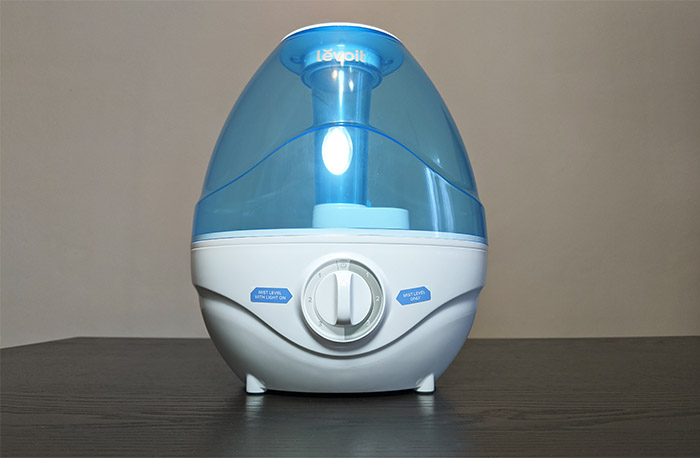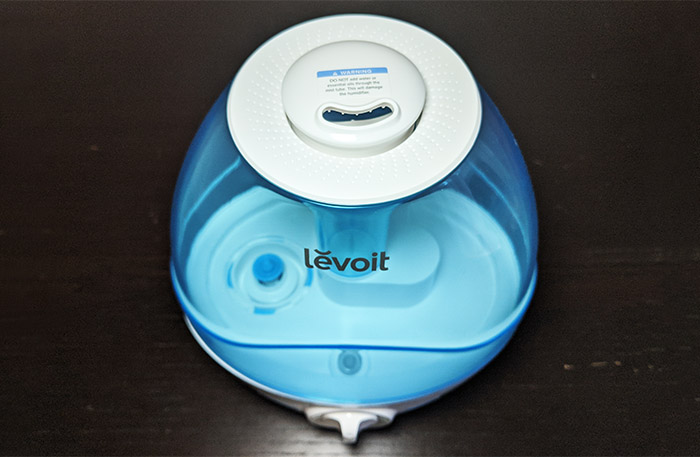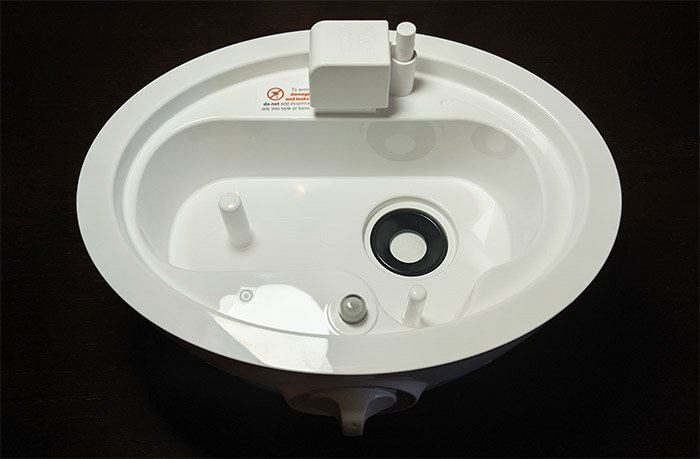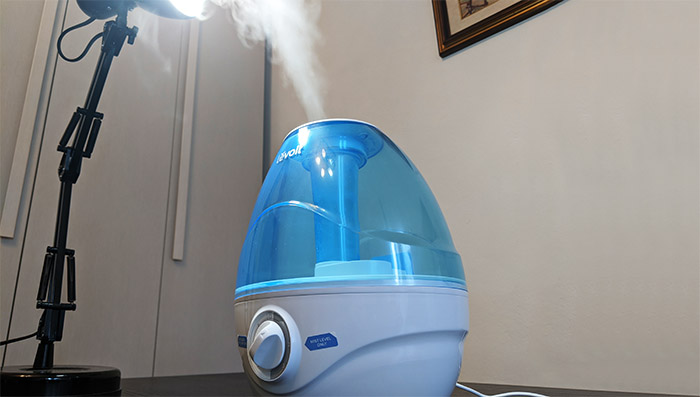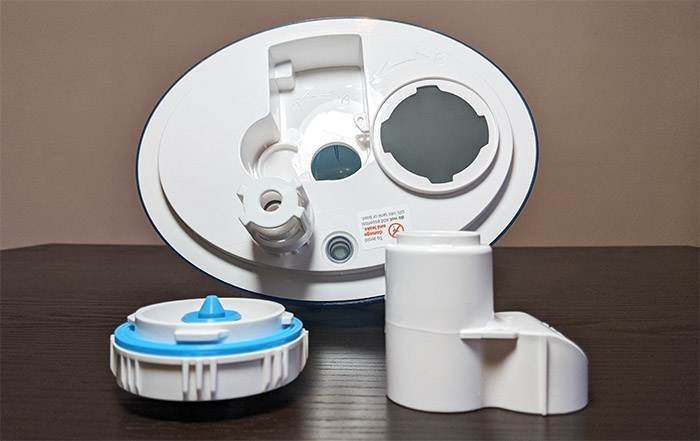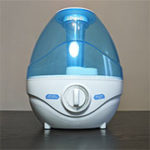As we fully enter the cold season, the heater is going to replace the outdoor warm air and running it daily will become a necessity, but besides the cozy sensation, there is one less pleasant consequence and that’s the dry air. It’s superfluous to list all the negatives of dry air, but, in essence, if you woke up with a sore throat or if your skin itches and feels dry, then you need to humidify the air in the room (and get some creams); furthermore, dry air can have a significant negative impact on the respiratory system, especially if you have sensitive sinuses or suffer from asthma.
| Levoit Classic 100 Humidifier | |
|---|---|
| Amazon.com | Check the Product |
Right now, the two main approaches used by the cool mist humidifiers are the evaporative and the ultrasonic technologies. The former relies on a ‘somewhat conventional’ method of moisturizing the air which requires a wick filter to take the water from the container and push it towards a fan, so the water will spread around in the form of mist. The ultrasonic humidifiers rely on a small plate which vibrates at an ultrasonic frequency and this vibration is powerful enough to break the water particles, creating a mist which is then spread around the room.
One advantage of the evaporative humidifiers is that they can filter the mineral deposits, while the ultrasonic ones do not (and they’re often associated with that white misty air), but one advantage that the ultrasonic humidifiers have over the evaporative ones is that they’re very quiet (there is no fan). The Levoit Classic 100 is a BPA-free ultrasonic cool mist humidifier (it’s quiet, but filter-less) which is a lot smaller than the other popular models, such as the LV6600HH and, because it’s only 2.4L (0.63 gallons), it’s not going to cover the whole house, but it should be quite effective for a single large room, so let’s put it to the test.
Design and Functionality
There really isn’t a universal design blueprint for the humidifiers but the larger ones have either rectangular or cylinder cases, while the smaller ones usually do end up looking more circular, some having that teardrop-like shape (there’s also Dyson which likes to be weird). And this is also pretty much the case with the Levoit Classic 100 which features an oval case made completely from BPA-free plastic with the bottom side being covered by a white matte finish (no fingerprints), while the top side is transparent with a blue tint.
The device can be easily moved around since it measures 8.5 x 6.7 x 10.2 inches and weighs 2.2lbs (when it’s empty), so it’s quite lightweight even after you add the 0.63 gallons of water. To keep the device into place, the humidifier has four small feet with silicone pads but they’re not going to make the device completely unmovable and you should still be able to slide it around the desk. The mechanism for this type of humidifiers requires a vibrating piece (diaphragm) to create small water particles which will exit the device in the room and to understand how the Levoit Classic 100 works, you will have to take it apart.
You don’t have to use a screwdriver or anything since the upper side isn’t really attached to the bottom part, it simply sits on top of it, but, before removing it, you need to pull the nozzle and the nozzle cap from the top (the nozzle cap can be unscrewed using a counterclockwise movement) and then simply take the top half of the device and position it upside down. At this point, you will be able to see the water tank cap (the largest cap) which you will have to rotate and remove in order to add water inside the container and in the middle of the tank cap, there is a spring-operated piece which will be automatically pressed by a dedicated plastic protrusion from the base part of the Levoit humidifier.
This way, some amount of water will enter the bottom section, therefore getting near the ultrasonic diaphragm. To regulate the amount of water that slips in the bottom part, there is a float housing attached to the water tank (it can’t be removed) and next to it, there’s a recessed area where Levoit has added what it calls the ‘noise silencer’ that has the role of conducting the water vapors through the mist tube and into the room – the way it was designed should ensure that the entire process is very quiet.
And it really is as confirmed by a sound meter which showed about 32-33dB right next to the device (one foot away) and most of the ‘noise’ was made by the nozzle. The mist is definitely visible and the manufacturer says that the particles are very fine (about 5 µm). The recommended type of water is distilled or demineralized and you shouldn’t put hot water inside the tank, nor add any essential oils since it can damage the humidifier and cause leaks after some time has passed. The reason why distilled or demineralized water is recommended is because of the potential mineral deposits that you would get with normal water and, since there is no filter, it will just spread around the room doing more harm than good.
Even so, you should make sure that the water is changed every day to not give a chance to bacteria growth and you should lightly clean the humidifier every three days and thoroughly clean it every two weeks. To do so, you need to remove the nozzle and the nozzle cap, remove the top part and pour any remaining water out of the base section; next, you should rinse the water tank and the inside of the base, but make sure that the water doesn’t touch the air outlet part and the front dial since these can be easily damaged by it.
Afterwards, you can remove any mineral or bacteria deposits using distilled white vinegar followed by simply wiping it with a cloth (there is also a cleaning brush inside the package). On the front of the device, there is a circular dial which has its functions cut in half: the left side has three available levels for the amount of mist that will enter the room and each enables the ambient blue LED light; the right side works in the same fashion, but it will keep the LED turned off. This LED is not very powerful, being more suitable during the night, but because it is blue, I’m not entirely sure it’s the best choice before going to bed (some studies have shown that the blue light can interfere with the production of melatonin). In case the humidifier is malfunctioning, the LED will be red (it can happen when there is little to no water inside the tank).
I didn’t have a moisture or humidity meter at hand to measure the air quality, but I can say that the air in the room changed quite quickly from being dry to acceptable. It would have been nice if the Levoit Classic 100 had a built-in humidistat and since it doesn’t, it does mean that it can over-humidify the room, so you will have to manually stop it when it reaches a certain humidity level.
Conclusion
The best humidifier is able to improve the air quality quickly, it is able to automatically maintain a comfortable moisture level, it’s quiet and easy to clean – and the portability factor is always a bonus. The Levoit Classic 100 does tick most boxes, so it’s a very well designed device, but it’s small proportions make it more suitable for a single room, so if that’s what you’re looking for, then this ultrasonic humidifier will be a suitable solution (I found that it can work great in a baby’s nursery, but you do need to keep an eye on the device so it doesn’t over-humidify the room).

